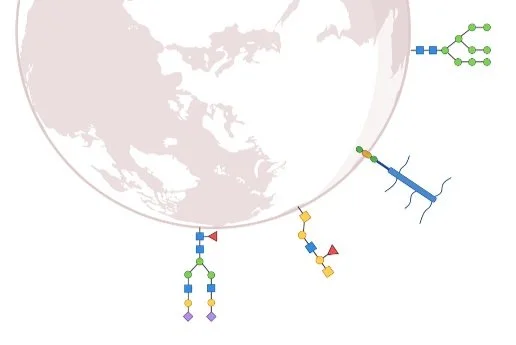GAGomics
GAGomics refers to the study of glycosaminoglycans using large scale techniques, providing comprehensive insights into their structure, function and dynamics in biology. We are developing mass spectrometry methods and glycoinformatics for the analysis of heparan sulphate and chondroitin/dermatan sulphate oligosaccharides. These vary in length, composition and positional sulphation patterns. During the life cycle of a proteoglycan, the GAG chains may be modified post-Golgi by multiple mechanisms and events, leading to a series of structures resulting from the parent glycan. Many proteoglycans display multiple GAG chains, adding further diversity to the mix. GAGomics aims to profile oligosaccharide diversity present in biological samples.
Proteoglycan libraries
Whilst proteoglycans are known to be a diverse family, each proteoglycan may also be present as a mixture of structures (often described as heterogeneity). Using a glycoengineered approach, we are developing libraries of individual proteoglycans with modified glycosylation (glycoforms) as models for interrogation of precise glycan biological function(s). By studying these at specific sites, we aim to unlock new information about proteoglycans, piece-by-piece, to build a clearer understanding of their role in health and disease.
The GlycoMAP project aims to purify and analyse glycosaminoglycans, N- and O-glycans from a single biological sample (e.g. tissue biopsy, biofluids, organoids, etc.) The approach combines a sequential purification workflow, mass spectrometry analyses and informatics to integrate glycomics for a top-down glycosylation profile of glycoproteins and proteoglycans for the first time.



